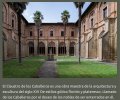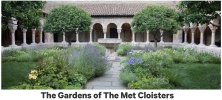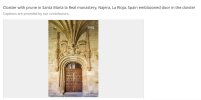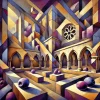It isn't a confusing of the type of tree but instead a mistaking of the word for it.
This morning before I had read
@Kathar1na's posts submitted about the multiple machine translations I discovered the same thing. I decided to view the HTML source of the web page to see if I could find out the name of the caption writer. It wasn't there but I did see that the HTML had alternate URLs for English, German, Italian and French. I'm guessing that these were so if you visited the
www.alamy.com version of the page but your browser was set for a different default language you would go to that page instead. Each of these versions had a different prune/plum translation of the caption. The German had Pflaume instead of Palme (Plum/Palm). So my guess is that someone with a less used first language (e.g., Finnish or Turkish) but had German as a second language wrote the caption and made the Plum for Palm error. The error then got propagated by machine translation to EN, IT and FR versions.
The quote below contains a snippet of the HTML code I found in
www.alamy.com/cloister-with-prune-in-santa-maria-la-real-monastery-najera-la-rioja-spain-image425869403.html. I've added some bolding.























